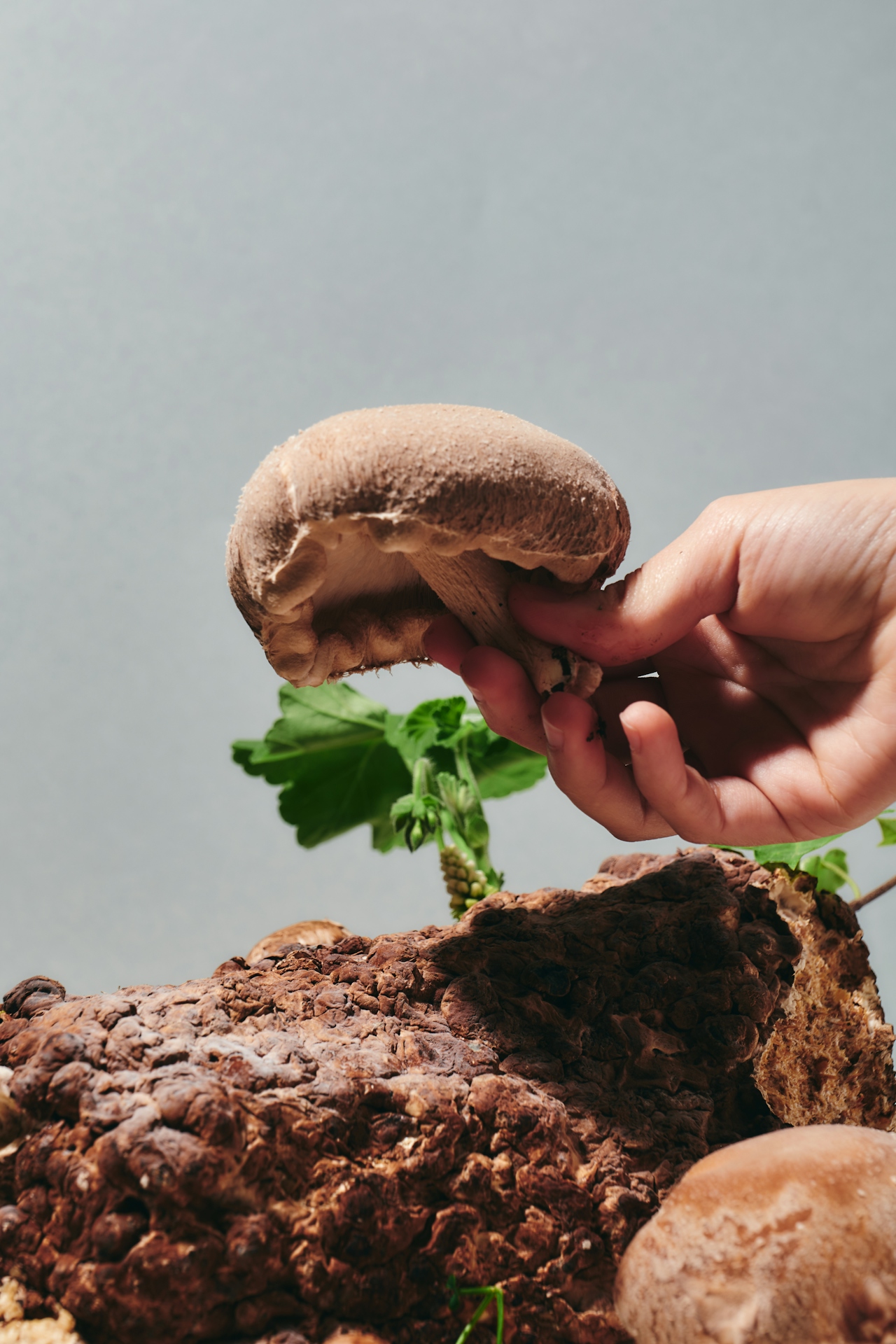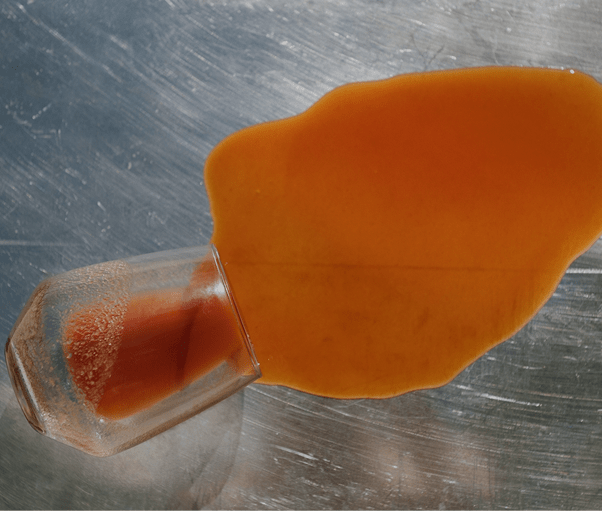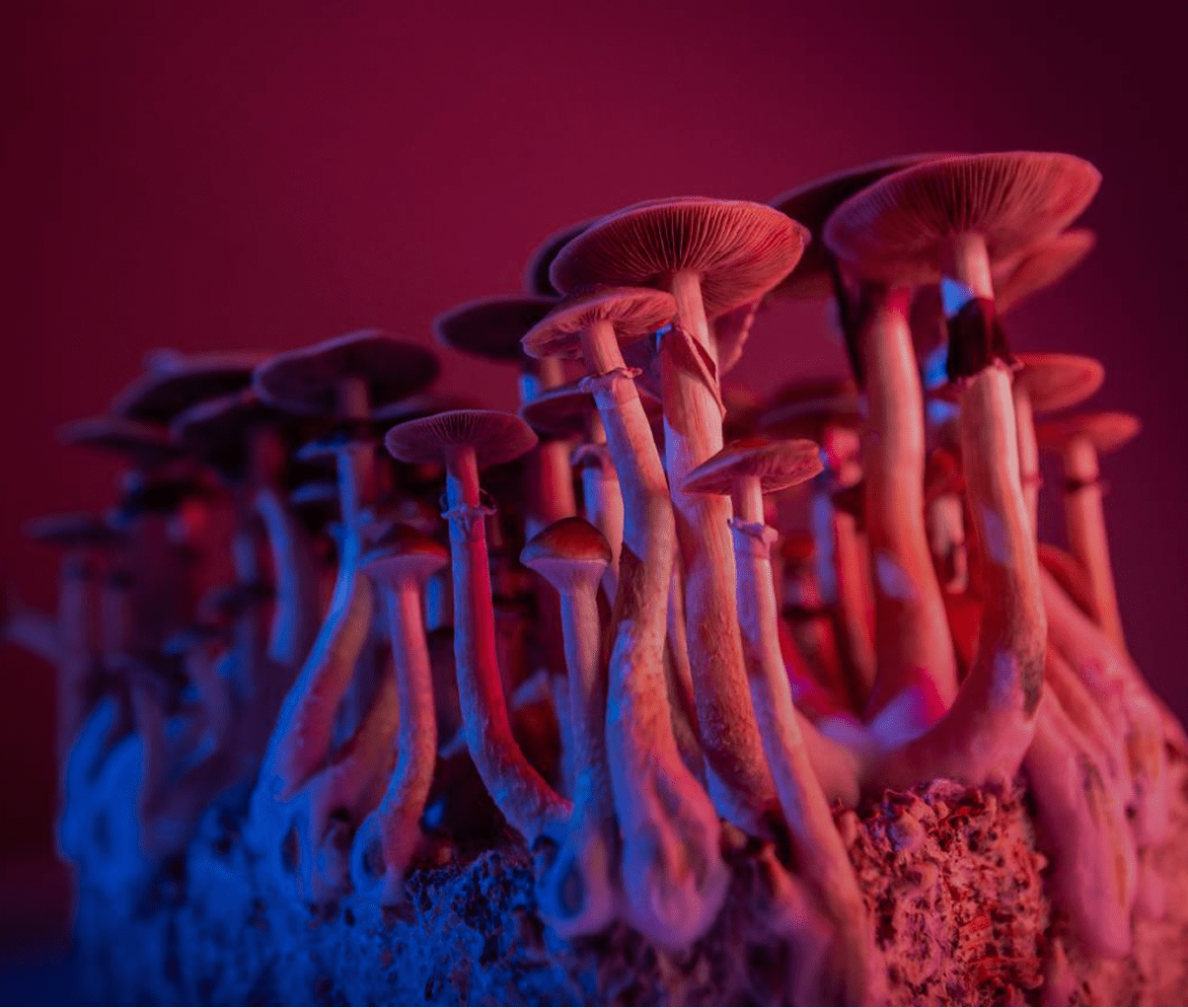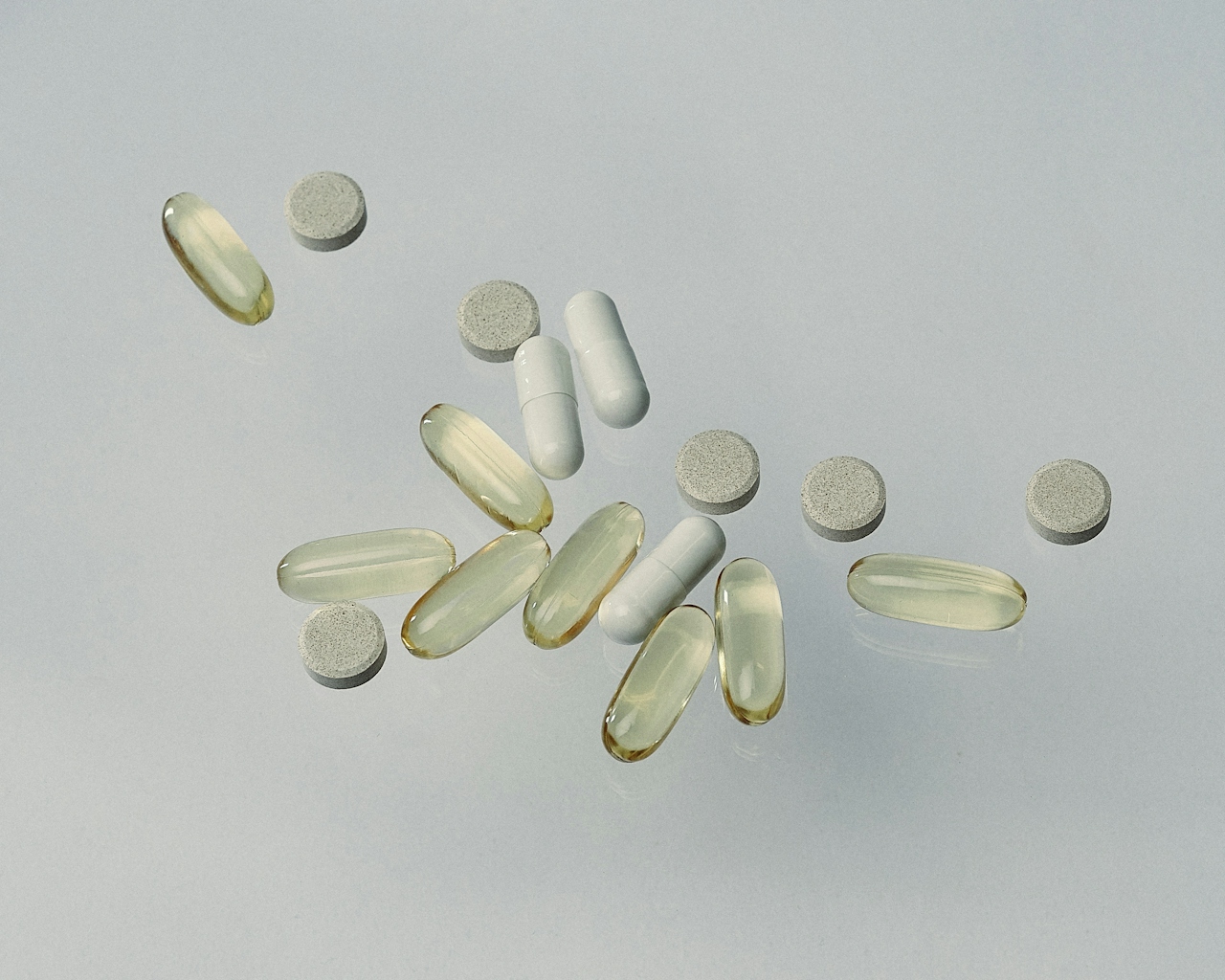
“Let food be thy medicine and medicine be thy food.” —Hippocrates
Welcome to the world of superfoods, where certain edibles have achieved almost mythical status—celebrated, commercialized, and occasionally weaponized in the never-ending quest to outsmart our own mortality.
The term “superfood” doesn't actually exist in scientific literature. It's a marketing invention that's simultaneously brilliant and frustrating. Brilliant because it highlights genuinely nutritious foods. Frustrating because it's been used to manipulate us into buying absurdly overpriced goji berries flown halfway around the world, losing nutrients and harming the environment with every mile.
So when did some food get demoted and “super” foods take the nutritional throne? The irony isn't lost that many of these miracle foods are what our ancestors simply called “dinner” before we processed, refined, and depleted our way into needing to rediscover them.
The science of longevity isn't actually that complicated.
- Eat plants—lots of them—in as many colors and varieties as possible.
- Get adequate protein.
- Don't fear healthy fats.
- Stay hydrated.
- Move your body.
- Sleep well.
- Connect with others.
But we've convinced ourselves that the answer must be more exotic. Here's what's real: certain foods do contain higher concentrations of compounds that support vitality and the biological mechanisms of aging well. They're not magic pills; they're just exceptionally good at what regular nutritious food already does. And while no single superfruit can reverse your biological clock, strategic combinations of evidence-backed foods can meaningfully influence how well you age. In this issue, we're cutting through the hype to reveal which foods genuinely deserve superfood status. We’ll explore some you know about, and some you probably don’t.
WHAT ARE LONGEVITY SUPERFOODS?
Longevity superfoods are nutrient-dense whole foods with exceptional concentrations of compounds that support cellular health, reduce inflammation, and help prevent age-related diseases. What sets true longevity superfoods apart is their comprehensive effect on multiple aging pathways simultaneously.
The most powerful longevity superfoods contain several key components:
- Antioxidants that neutralize free radicals and reduce oxidative stress
- Anti-inflammatory compounds that help combat chronic inflammation
- Polyphenols that activate longevity pathways in cells
- Fiber and prebiotics that nourish beneficial gut bacteria
- Essential micronutrients that support cellular repair and function
Perhaps most importantly, these foods work synergistically—their combined effect is greater than what any single superfood can provide.
BERRIES
Berries represent one of the most powerful superfood categories, with research consistently linking them to reduced cognitive decline, improved vascular function, and longer healthspan. Dr. Michael Greger, author of How Not To Die and the follow-up How Not To Age, emphasizes berries as a daily “must-have” for longevity, noting that one long-term study suggests that eating a serving of berries every day could add an extra year to lifespan.
Amla (Indian Gooseberries)
Amla is the single most antioxidant-packed whole food ever documented. On average, it has about 50–100 times more antioxidant power by weight than blueberries. These potent antioxidants (e.g., emblicanin, gallic acid) help lower oxidative stress and inflammation associated with aging. They are popular in ayurvedic medicine.
Trials show that as little as half a teaspoon of amla powder daily can dramatically improve health markers. One study found amla reduced total cholesterol by 35–40% in just three weeks—a reduction comparable to starting a statin drug. By improving cholesterol, blood sugar, and liver enzyme levels, amla may reduce cardiovascular and metabolic risks, thus promoting a longer healthspan.
Wild Blueberries
Wild blueberries contain 2–3 times the antioxidant content of conventional blueberries.
Research shows wild blueberries provide:
- Improved memory and cognitive function
- Enhanced vascular elasticity
- Reduced oxidative stress markers
- Support for gut microbial diversity
Also, wild blueberries have 30% less sugar and 72% more fiber than cultivated varieties, making them a low-glycemic food that supports metabolic health.
This isn’t to say conventional blueberries aren’t good for you. They are still a superfood, packed with antioxidants and vitamins, offering substantial benefits. But if you can find wild blueberries, they’re a better option.
Raspberries
With the highest measured ellagic acid content among almost any food, raspberries have demonstrated exceptional cancer-protective properties. Studies show they can actually modify gene expression related to inflammation and oxidative stress.
Black raspberries have one the highest concentrations of ellagic acid, while the more common red raspberry also contains a significant amount.
Aronia Berries
Aronia berries contain the highest measured anthocyanin levels among commonly available berries, making them one of the most potent sources of these powerful antioxidants. Anthocyanins help reduce oxidative stress, improve blood vessel function, regulate blood sugar, and support immune health, making aronia berries a top choice for longevity and disease prevention. They have 344% more antioxidants than blueberries.
For optimal benefit, berries should be organic and consumed either fresh or flash-frozen at peak ripeness. Combining different berry types creates a synergistic effect, maximizing the range of beneficial compounds.
CRUCIFEROUS VEGETABLES
Cruciferous vegetables are associated with lower rates of all-cause mortality and various cancers, including prostate, colorectal, lung, and breast cancers. Eat a lot of them, often.
Broccoli Sprouts
Perhaps the most potent cruciferous option, broccoli sprouts contain 50-100 times more sulforaphane precursors than mature broccoli, and 100-400 times more than other cruciferous vegetables.
Research shows sulforaphane from broccoli sprouts enhances cellular detoxification, reduces inflammatory markers, protects against DNA damage, and supports brain health through blood-brain barrier protection. Aim for 0.5–1 cup daily.
Other Options
Brussels sprouts (high in sulforaphane and vitamin K), red cabbage (high in anthocyanins), watercress (extremely high concentration of cancer-protective properties because of PEITC), and kale (rich in Vitamin K) are all great options to reap the incredible benefits of cruciferous vegetables.
The key to maximizing benefits from cruciferous vegetables lies in proper preparation. Chopping or blending and allowing them to rest for even 40-45 minutes before eating raw or light cooking (steaming for best results) optimizes the formation of bioactive compounds.
LEAFY GREENS
Leafy greens represent one of the most consistent dietary factors associated with longevity across populations. Their high nitrate content supports vascular health, while their diverse phytochemical profile offers broad cellular protection.
Arugula
With the highest nitrate content among common greens, arugula supports nitric oxide production, enhancing blood flow and vascular function. This mechanism may explain why leafy green consumption is so strongly linked to cardiovascular health and reduced cognitive decline.
Swiss Chard
Offering an optimal mineral profile including magnesium and potassium, Swiss chard supports cellular energy production and electrical signaling throughout the body.
Microgreens
These immature greens contain 4-40 times the nutrient concentration of their mature counterparts, offering concentrated nutritional support in small volumes.
Spinach
Rich in lutein and zeaxanthin, spinach provides exceptional support for eye health and cognitive function, with research linking its consumption to reduced age-related cognitive decline.
LEGUMES
Beans are amazing for healthspan and general wellness. A study of over 1 million participants published in January 2023 found that higher legume consumption was associated with a 6% reduction in all-cause mortality risk for every 50g/day increase in intake.
Proper preparation through soaking and thorough cooking helps neutralize anti-nutrients and maximize bioavailability of their impressive mineral content.Dramatic improvements in daily energy levels
Black Beans
Black beans offer the highest antioxidant activity among common beans. Their dark pigmentation indicates potent anti-inflammatory compounds.
Lentils
Perhaps the most nutritionally complete legume, lentils contain exceptional levels of polyphenols, protein, and iron. The small red and black varieties have significantly higher antioxidant content than other types.
Chickpeas
With their unique combination of protein and resistant starch, chickpeas support weight management and glucose regulation while providing substantial amounts of folate and manganese.
Azuki Beans
Popular in Japanese longevity diets, these small red beans contain potent antioxidants and have been shown to support cardiovascular health.
For maximum benefit, aim for at least 3-4 servings weekly, rotating between varieties to obtain the broadest spectrum of beneficial compounds.
NUTS
Regular nut consumption has been linked to up to a 30% lower risk of dying from major chronic diseases like heart disease.
Walnuts
Among all nuts, walnuts stand out. A palmful of walnuts per day will get you the benefits of all the polyunsaturated fatty acids, omega-3s, vitamin E, and anti-inflammatory phytochemicals linked to brain health and lower rates of oxidative stress, cholesterol, and premature death.
“Ounce-per-ounce, nuts are associated with the lowest risk of premature death compared to any other food group.”
—Dr. Michael Greger
ALLIUM VEGETABLES
Garlic, onions, leeks, shallots, and chives—collectively known as allium vegetables—are daily staples for longevity due to their potent anti-cancer and cardioprotective effects.
Beyond cancer prevention, alliums reduce inflammation, lower blood pressure, and improve cholesterol profiles. The compounds in garlic have been shown to reduce platelet aggregation (similar to aspirin but without the side effects) and support healthy blood vessels.
For maximum benefit:
- Crush or chop garlic and let it sit for 10 minutes before cooking to activate beneficial compounds
- Include at least one serving of allium vegetables daily
- Use both raw and cooked forms for different beneficial compounds
- Combine with other foods for synergistic effects
HERBS AND SPICES
Herbs are antioxidant powerhouses. Many herbs—like oregano, thyme, rosemary, sage, and basil—are among the foods with the highest antioxidant levels. Even using a pinch or dash can impart significant benefits. For example, just a single teaspoon of dried oregano can double the antioxidant content of a meal.
Turmeric
Turmeric deserves its reputation as the “golden spice” of longevity. Its active component curcumin is a potent anti-inflammatory and antioxidant compound. Curcumin has been shown to help prevent or mitigate chronic diseases such as Alzheimer's, cancer, arthritis, and heart disease—all conditions that shorten lifespan. The recommended daily intake of turmeric powder for potential health benefits ranges from 500 to 2,000 mg. However, the optimal dosage can vary depending on the specific condition you're trying to address. The average maintenance amount is roughly 0.5–1 teaspoon per day. Turmeric supplements often contain higher concentrations of curcumin than what is found in the spice used for cooking.
“The food you eat can be either the safest and most powerful form of medicine or the slowest form of poison.”
—Ann Wigmore
MANUKA HONEY
Manuka honey stands apart from conventional honey varieties as a true medicinal superfood with remarkable properties. Produced by bees native to New Zealand and parts of Australia, this honey contains unique compounds not found in regular honey. The power of Manuka honey lies in its exceptional concentration of compounds, far exceeding those of regular honey. Research shows Manuka honey offers several potential longevity benefits:
- Powerful antimicrobial effects that work even against antibiotic-resistant bacteria
- Significant anti-inflammatory action that may help reduce chronic inflammation
- Prebiotic effects that support gut microbiome diversity
- Antioxidant capacity that helps neutralize free radicals
- Enhanced wound-healing properties validated in clinical settings when applied topically
Research suggests consuming 1-2 teaspoons daily, ideally on an empty stomach or 30 minutes before meals to maximize absorption of bioactive compounds. Unlike processed sweeteners, high-quality Manuka honey has a relatively low glycemic impact despite its sweetness. The extraordinary demand for Manuka honey has led to widespread fraud in the marketplace.
Make sure to look for:
- Verified UMF certification on the label
- New Zealand origin with traceable sourcing
- Batch testing information available from the producer
- Raw, unpasteurized forms to preserve bioactive compounds
RAW CACAO (THE “BLISS MOLECULE”)
Cacao is renowned for its exceptionally high antioxidant content, including flavonoids and polyphenols, which help combat free radicals (unstable molecules that damage your cells by stealing electrons) and oxidative stress (when too many free radicals build up and damage cells) in the body. It can also help lower blood pressure and improve vascular function.
Cacao stimulates the production of anandamide, known as the “bliss molecule,” which promotes feelings of happiness and relaxation. Essentially, chocolate makes you happy; it’s science. Plus, cacao is a mild stimulant, so it may improve your mood, cognition, and memory without the jitters of caffeine. Processed cocoa, found in things like candy bars and ice cream, is heated, which reduces its antioxidants, vitamins, and minerals. It also often contains additives like sugar and fat. If you choose dark chocolate, find one with at least 85% cacao, as it retains more nutrients and has less added sugar. Raw cacao powder and cacao nibs are the least processed forms of chocolate, keeping their high levels of antioxidants, magnesium, and other essential nutrients. Cacao powder is great for smoothies, oatmeal, and baking, while cacao nibs add a crunchy, slightly bitter chocolate flavor to snacks and desserts.
HIMALAYAN TARTARY BUCKWHEAT
Himalayan Tartary Buckwheat (HTB), largely forgotten in modern diets, is described by Dr. Mark Hyman as “the most important food you've never heard of.” It was once a dietary staple in regions known for exceptional longevity, particularly in the Himalayan highlands where centenarians were common despite harsh living conditions What makes HTB exceptional is its remarkable concentration of protective compounds. It contains much more immune-supporting quercetin than regular buckwheat and provides the highest food source of rutin, a powerful vascular-strengthening flavonoid. HTB also contains rare cognitive-supporting flavonoids and is rich in 2-HOBA, which protects proteins from oxidative damage. As Dr. Hyman explains, “These compounds create hormetic stress—a beneficial type of stress that makes your cells stronger, similar to how exercise works.” Dr. Hyman emphasizes that adding it to your diet helps fight ”the four horsemen of aging”—oxidative stress, glycation, inflammation, and toxicity. Unlike common buckwheat, HTB has a more bitter flavor profile due to its high flavonoid content. Dr. Hyman recommends using it in specific ways:
- As a flour mixed into smoothies or baked goods (2-3 tablespoons daily)
- As part of a morning porridge combined with berries to mask the bitterness
- In pancakes or waffles mixed with other flours
True Himalayan Tartary Buckwheat is distinct from common buckwheat found in most stores. Look for certified sources that verify origin and processing methods. Dr. Hyman recommends finding sources that test for both purity and compound levels, as the growing conditions significantly impact its therapeutic properties.
THE BLUE ZONES: LONGEVITY ALL-STARS
To wrap up, let’s look at some of the most compelling evidence for longevity superfoods that comes from studying the “Blue Zones”—regions with the highest concentration of healthy centenarians. These areas give us some anecdotal insight into which foods consistently appear in the diets of the world's longest-lived people.
The Okinawan Sweet Potato In Okinawa, where the world's longest-lived women reside, the purple sweet potato accounts for over 60% of their traditional diet. Rich in anthocyanins and fiber, these potatoes have a lower glycemic index than regular potatoes and contain unique compounds that support vascular health and cellular protection.
Sardinian Sourdough In the mountains of Sardinia, home to the world's highest concentration of male centenarians, traditional sourdough bread is fermented for nearly 24 hours. This process breaks down gluten and creates compounds that may actually help regulate blood sugar. The fermentation also increases the bioavailability of minerals and creates prebiotic compounds that support gut health.
Costa Rican Beans In Nicoya, Costa Rica, centenarians prepare traditional black beans rich in polyphenols and fiber. Combined with corn tortillas, they create a complete protein that's been sustaining their population for millennia. These beans provide resistant starch, which feeds beneficial gut bacteria and helps regulate blood glucose.
The Ikarian Herb Tea On the Greek island of Ikaria, where people "forget to die," wild herbs like rosemary, sage, and dandelion aren't garnishes—they're daily medicine, consumed as teas packed with compounds that reduce inflammation and support longevity. These herb teas contain terpenes and phenolic compounds with anti-inflammatory and neuroprotective properties, and also serve as diuretics, keeping your blood pressure low.
A HOLISTIC APPROACH
While these longevity superfoods offer remarkable benefits, remember they aren't magic bullets. Their full potential is realized only when paired with quality sleep, regular movement, stress management, and social connection. Even in Blue Zones, it's the complete lifestyle—not just individual foods—that creates extraordinary longevity.
Choose organic when possible, and be aware that some superfoods like amla, turmeric, flaxseeds, and others can interact with medications. Everyone's body responds differently, so consult healthcare providers when appropriate.
|
Disclaimer: This newsletter is provided for educational and informational purposes only and does not constitute providing medical advice or professional services. The information provided should not be used for diagnosing or treating a health problem or disease, and those seeking personal medical advice should consult with a licensed physician.

December 5, 2025

November 21, 2025

November 14, 2025

November 14, 2025

November 7, 2025

October 31, 2025

October 24, 2025

October 17, 2025

October 10, 2025




















































